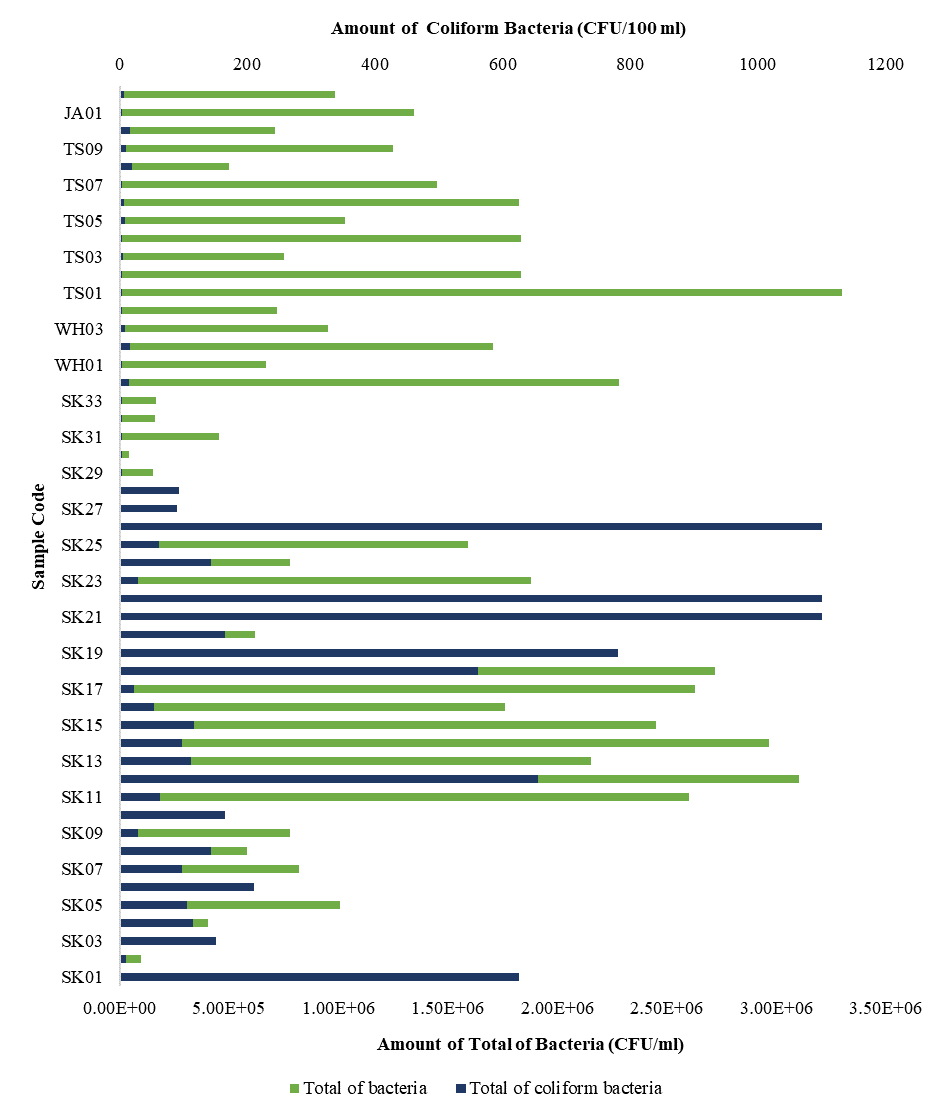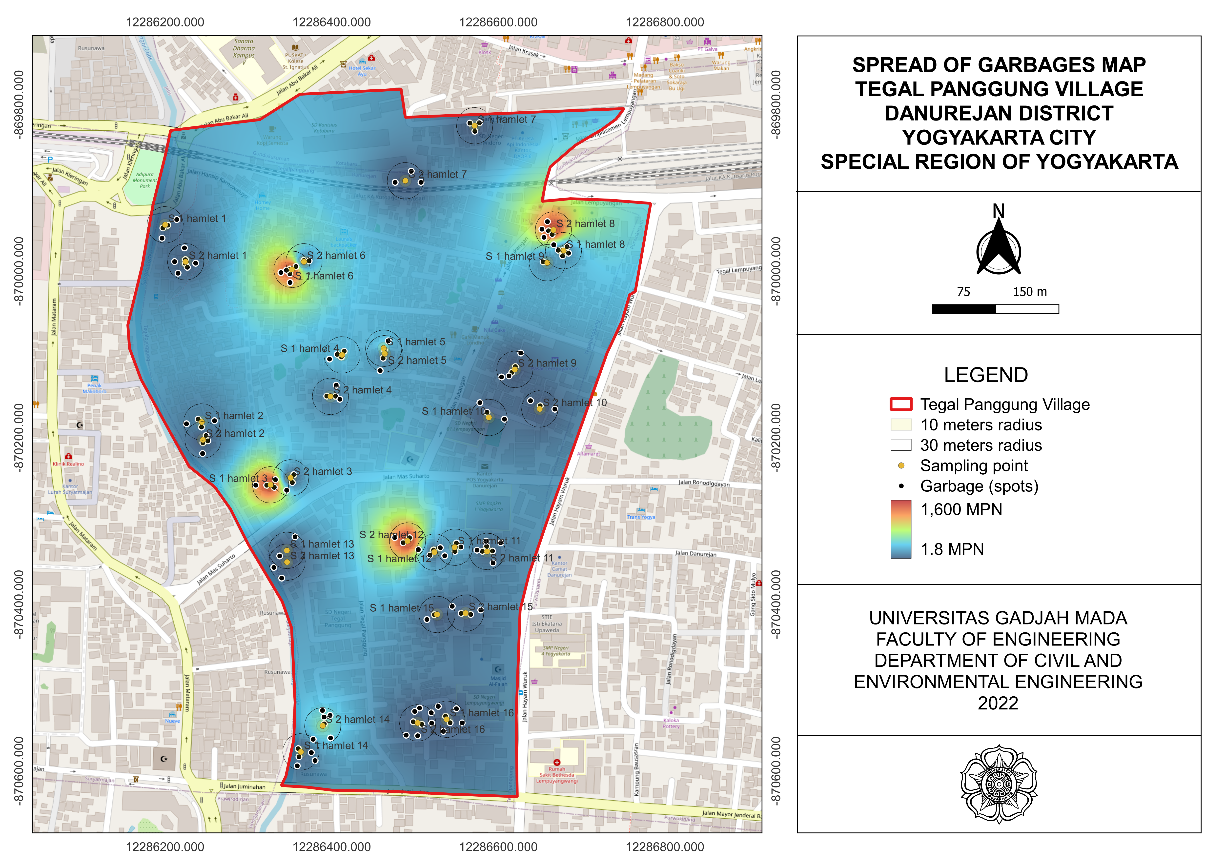Evaluation of Adulticidal Efficacy of Cypermethrin, Tetramethrin, and Piperonyl Butoxide in Housefly (Musca Domestica)

Introduction: Houseflies serve as vectors of diseases in animals and humans. Chemical pesticides are a practical way of eliminating insects; however, resistance to insecticides has been reported. This study aims to evaluate the adulticidal efficacy of cypermethrin, tetramethrin, and piperonyl butoxide in housefly. Methods: Adult flies were cultured within net enclosures using completely randomized design with four replications each treatment. Treatment A was water and served as the negative control, treatment B was cypermethrin + tetramethrin + piperonyl butoxide 32% EC and served as the positive control, and treatment C was cypermethrin + tetramethrin + piperonyl butoxide 48% EC. The number of dead houseflies were counted 15, 30, 60, and 120 minutes post- application of treatments. The results were analyzed through analysis of variance (P≤0.05) followed by Tukey’s HSD (honestly significant difference). Results and Discussion: The values for the cumulative mean and percentage of killed houseflies were all significantly different from each other, with treatment C showing the highest values, followed by treatment B, then treatment A. The maximum adulticidal effect of treatment C was apparent within 15 minutes post-application, while the maximum adulticidal effect of treatment B was observed within 30 minutes after application. Conclusion: Results suggest that treatment C was a more effective adulticidal than other groups. Using cypermethrin + tetramethrin + piperonyl butoxide 48% EC can be the solution to the problem, but it should be noted that future resistance may occur. Increased concentrations may also imply environmental, human, and animal health hazards.
Gerry AC. Monitoring House Fly (Diptera: Muscidae) Activity on Animal Facilities. Journal of Insect Science. 2020;20(6):1-7. https://doi.org/10.1093/jisesa/ieaa109
Bertelloni F, Bresciani F, Cagnoli G, Scotti B, Lazzerini L, Marcucci M, et al. House Flies (Musca domestica) from Swine and Poultry Farms Carrying Antimicrobial Resistant Enterobacteriaceae and Salmonella. Veterinary Science. 2023;10(2):1-14. https://doi.org/10.3390/vetsci10020118
Yin JH, Kelly PJ, Wang C. Flies as Vectors and Potential Sentinels for Bacterial Pathogens and Antimicrobial Resistance: A Review. Veterinary Science. 2022;9(6):1-10. https://doi.org/10.3390/vetsci9060300
Geden CJ, Nayduch D, Scott JG, Burgess ER, Gerry AC, Kaufman PE, et al. House Fly (Diptera: Muscidae): Biology, Pest Status, Current Management Prospects, and Research Needs. Journal of Integrated Pest Management. 2021;12(1):1-38. https://doi.org/10.1093/jipm/pmaa021
Bolinger H, Miller WG, Osborne JA, Niedermeyer J, Kathariou S. Campylobacter jejuni and Campylobacter coli from Houseflies in Commercial Turkey Farms Are Frequently Resistant to Multiple Antimicrobials and Exhibit Pronounced Genotypic Diversity. Pathogens. 2023;12(2):1-12. https://doi.org/10.3390/pathogens12020230
Nayduch D, Neupane S, Pickens V, Purvis T, Olds C. House Flies Are Underappreciated Yet Important Reservoirs and Vectors of Microbial Threats to Animal and Human Health. Microorganisms. 2023;11(3):1-13. https://doi.org/10.3390/microorganisms11030583
Fayyaz A, Zahoor MK, Ashraf A, Zahoor MA, Rasul A, Majeed HN, et al. House Fly, Musca domestica (Diptera: Muscidae) Acts as a Mechanical Vector for Newcastle Disease of Poultry in Faisalabad, Pakistan. Pakistan Journal of Zoology. 2022;54(4):1–5. https://dx.doi.org/10.17582/journal.pjz/20190215080254
Issa R. Musca domestica Acts As Transport Vector Hosts. Bulletin of the National Research Centre; 2019;43(1):1-5. https://doi.org/10.1186/s42269-019-0111-0
Otu-Bassey IB, Efretuei GK, Mbah M. Gut Parasites of medical importance harboured by Musca domestica in Calabar, Nigeria. Tropical Parasitology. 2022;12(2):99–104. https://pubmed.ncbi.nlm.nih.gov/36643981/
Hinkle NC, Hogsette JA. A Review of Alternative Controls for House Flies. Insects. 2021;12(11):1-18. https://doi.org/10.3390/INSECTS12111042
Tudi M, Ruan HD, Wang L, Lyu J, Sadler R, Connell D, et al. Agriculture Development, Pesticide Application and Its Impact on The Environment. International Journal of Environmental Research and Public Health. 2021;18(3):1–23. https://doi.org/10.3390/ijerph18031112
Matsuo N. Discovery and Development of Pyrethroid Insecticides. Proceeding of Japan Academy Series B, Physical and Biological Science. 2019;95(7):378–400. https://doi.org/10.2183/pjab.95.027
Stejskal V, Vendl T, Aulicky R, Athanassiou C. Synthetic and Natural Insecticides: Gas, Liquid, Gel and Solid Formulations for Stored-Product and Food-Industry Pest Control. Insects. 2021;12(7):1-68. https://doi.org/10.3390/insects12070590
Araújo MF, Castanheira EMS, Sousa SF. The Buzz on Insecticides: A Review of Uses, Molecular Structures, Targets, Adverse Effects, and Alternatives. Molecules. 2023;28(8):1–16. https://doi.org/10.3390/molecules28083641
Hodoșan C, Gîrd CE, Ghica MV, Dinu-Pîrvu CE, Nistor L, Bărbuică IS, et al. Pyrethrins and Pyrethroids: A Comprehensive Review of Natural Occurring Compounds and Their Synthetic Derivatives. Plants. 2023;12(23):1–20. https://doi.org/10.3390/plants12234022
Ahamad A, Kumar J. Pyrethroid pesticides: An overview on classification, toxicological assessment and monitoring. Journal of Hazardous Materials Advances. 2023;10(1):1-15. https://doi.org/10.1016/j.hazadv.2023.100284
Riaz B, Zahoor MK, Malik K, Ahmad A, Majeed HN, Jabeen F, et al. Frequency of Pyrethroid Insecticide Resistance kdr Gene and Its Associated Enzyme Modulation in Housefly, Musca domestica L. Populations From Jhang, Pakistan. Frontiers in Environment Science. 2022;9(1):1–9. https://doi.org/10.3389/fenvs.2021.806456
Jenkins AE, Scarlett CO, Beames TG, Rivera-González KS, Martin AA, Sun MR, et al. Pharmacokinetic Analysis of Acute and Dietary Exposure to Piperonyl Butoxide in The Mouse. Toxicol Reports. 2023;11(1):310–317. https://doi.org/10.1016/j.toxrep.2023.09.017
Bae JW, Kwon WS. Piperonyl Butoxide, A Synergist of Pesticides Can Elicit Male-Mediated Reproductive Toxicity. Reproductive Toxicology. 2021;100(1):120–125. https://doi.org/10.1016/j.reprotox.2021.01.010
Fang Y, Shi WQ, Wu JT, Li YY, Xue JB, Zhang Y. Resistance to Pyrethroid and Organophosphate Insecticides, and The Geographical Distribution and Polymorphisms of Target-Site Mutations in Voltage-Gated Sodium Channel and Acetylcholinesterase 1 Genes in Anopheles Sinensis Populations in Shanghai, China. Parasites and Vectors. BioMed Central. 2019;12(1):1–13. https://doi.org/10.1186/s13071-019-3657-7
Jeffers AH, Chong JH. Biological Control Strategies in Integrated Pest Management (IPM) Programs. Clemson: Land-Grant Press; 2021. https://lgpress.clemson.edu/publication/biological-control-strategies-in-integrated-pest-management-ipm-programs/
Sundar SB, Ravi LB, Veterinary TN, Tma S, Veterinary TN, Veterinary TN. Design and Fabrication of Different Electric and Solar Traps For Musca Domestica (House Fly) and Field Evaluation of Traps in Poultry Unit. Agricultural Mechanization in Asia. 2023;54(7):14479-14491. https://www.shin-norinco.com/article/design-and-fabrication-of-different-electric-and-solar-traps-for-musca-domestica-house-fly-and-field-evaluation-of-traps-in-poultry-unit
Hołyńska-Iwan I, Szewczyk-Golec K. Pyrethroids: How They Affect Human and Animal Health?. Medicina. 2020;56(11):1–5. https://doi.org/10.3390/medicina56110582
Ye M, Nayak B, Xiong L, Xie C, Dong Y, You M, et al. The Role of Insect Cytochrome P450s in Mediating Insecticide Resistance. Agriculture. 2022;12(1):1-18. https://doi.org/10.3390/agriculture12010053
Nikookar SH, Fazeli-Dinan M, Ziapour SP, Ghorbani F, Salim-Abadi Y, Vatandoost H, et al. First Report of Biochemical Mechanisms of Insecticide Resistance in The Field Population of Culex Pipiens (Diptera: Culicidae) from Sari, Mazandaran, North of Iran. Journal of Arthropod-Borne Dieases. 2019;13(4):378–390. https://doi.org/10.18502/jad.v13i4.2234
Fujiyama K, Hino T, Nagano S. Diverse Reactions Catalyzed by Cytochrome P450 and Biosynthesis of Steroid Hormone. Biophys and Physicobiology. 2022;19(1):1–16. https://doi.org/10.2142/biophysico.bppb-v19.0021
Andersen HR, David A, Freire C, Fernández MF, D’Cruz SC, Reina-Pérez I, et al. Pyrethroids and Developmental Neurotoxicity - A Critical Review of Epidemiological Studies and Supporting Mechanistic Evidence. Environmental Research. 2022;214(2):1-20. https://doi.org/10.1016/j.envres.2022.113935
Habedank D, Stubbe B, Ewert R, Kroll A, Atmowihardjo I, Habedank B. Inhalation of Publicly Available Indoor Insecticide Spray Caused Myocardial Infarction Type II: A Case Report. ESC Heart Failure. 2021;8(4):3403–3407. https://doi.org/10.1002/ehf2.13389
Ahmad MF, Ahmad FA, Alsayegh AA, Zeyaullah M, AlShahrani AM, Muzammil K, et al. Pesticides Impacts on Human Health and The Environment with Their Mechanisms of Action and Possible Countermeasures. Heliyon. 2024;10(7):1-26. https://doi.org/10.1016/j.heliyon.2024.e29128
Pitzer EM, Williams MT, Vorhees CV. Effects of Pyrethroids on Brain Development and Behavior: Deltamethrin. Neurotoxicology and Teratology. 2021;87(1):1-19. https://doi.org/10.1016%2Fj.ntt.2021.106983
Chia XK, Hadibarata T, Kristanti RA, Jusoh MNH, Tan IS, Foo HCY. The Function of Microbial Enzymes in Breaking Down Soil Contaminated with Pesticides: A Review. Bioprocess and Biosystem Engineering. 2024;47(1):597–620. https://doi.org/10.1007/s00449-024-02978-6
Farag MR, Alagawany M, Bilal RM, Gewida AGA, Dhama K, Abdel-Latif HMR, et al. An Overview on The Potential Hazards of Pyrethroid Insecticides in Fish, with Special Emphasis on Cypermethrin Toxicity. Animals. 2021;11(7):1-17. https://doi.org/10.3390/ani11071880
Pathak VM, Verma VK, Rawat BS, Kaur B, Babu N, Sharma A, et al. Current Status of Pesticide Effects on Environment, Human Health and It’s Eco-Friendly Management as Bioremediation: A Comprehensive Review. Frontiers in Microbiology. 2022;13(1):1–29. https://doi.org/10.3389/fmicb.2022.962619

This work is licensed under a Creative Commons Attribution-NonCommercial-ShareAlike 4.0 International License.
1. Copyright of all journal manuscripts is held by the Jurnal Kesehatan Lingkungan.2. Formal legal provisions to access digital articles of electronic journal are subject to the provision of the Creative Commons Attribution-ShareAlike license (CC BY-NC-SA), which means that Jurnal Kesehatan Lingkungan is rightful to keep, transfer media/format, manage in the form of databases, maintain, and publish articles.
3. Published manuscripts both printed and electronic are open access for educational, research, and library purposes. Additionally, the editorial board is not responsible for any violations of copyright law.
JKESLING by UNAIR is licensed under a Creative Commons Attribution-ShareAlike 4.0 International License.







































